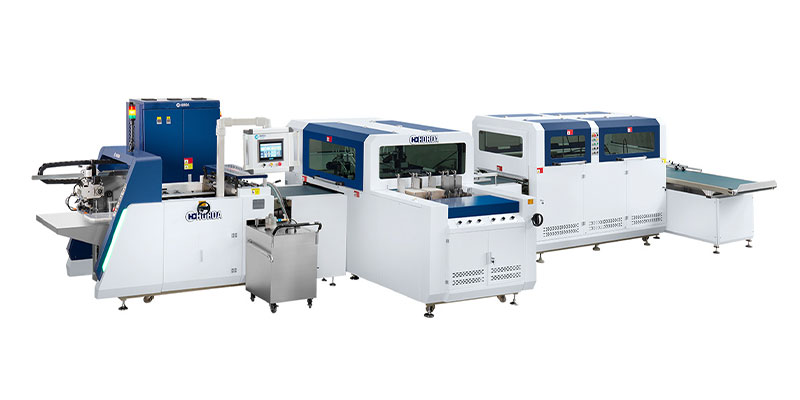The 2025 environmental standards are driving significant transformations in hardcover making machine design, particularly through stricter regulations on emissions, material safety, and energy efficiency. Here's a detailed analysis of the key impacts and industry responses:

Revised standards mandate stricter limits on volatile organic compounds (VOCs), including benzene series and non-methane hydrocarbons (NMHC). This has forced manufacturers to adopt low-VOC adhesives and inks compliant with national standards. For example, water-based or UV-curable adhesives are replacing solvent-based alternatives, requiring machines to integrate adaptive dispensing systems that handle lower viscosities and faster curing times. Additionally, new designs include closed-loop ventilation systems to capture and treat emissions.
Stringent limits on hazardous substances like formaldehyde, phthalates, and heavy metals in children’s books have led to machine designs prioritizing material traceability and compatibility with eco-certified materials. Machines must also accommodate non-toxic coatings and laminates, which may require adjustments to coating rollers and drying mechanisms to ensure uniform application without compromising safety.
To address paper waste and comply with circular economy goals, machines are integrating automated waste collection systems. Innovations use adjustable clamps and sensors to minimize misalignment errors, reducing paper scraps. Additionally, systems crush and repurpose trimmings into reusable cardboard through adhesive mixing and compression, eliminating solid waste. These systems are increasingly modular, allowing easy integration into existing production lines.
Emphasis on energy-efficient components like IE5 motors and variable frequency drives (VFDs) has led to hardcover machines featuring smart power management systems that optimize energy use during idle periods. AI-driven algorithms also predict maintenance needs, reducing downtime and resource waste.
Export-oriented manufacturers must navigate dual compliance with international regulations, which require detailed chemical safety reports for materials like inks and adhesives. This has led to supply chain audits and partnerships with certified suppliers. Machines are also designed to handle multi-material compatibility, allowing quick switching between compliant materials without retooling.
While compliance raises initial costs—estimated at 15-20% for retrofitting older machines—long-term benefits include reduced waste disposal fees and access to premium markets. Government incentives offer subsidies for energy-efficient upgrades, offsetting investment costs. Manufacturers have capitalized on this by launching modular machines that meet multiple standards, capturing export markets.
The 2025 environmental standards are reshaping hardcover machine design through emission control, material safety innovation, waste reduction, and intelligent automation. While challenges like higher R&D costs persist, the industry is embracing these changes to align with global sustainability goals and gain competitive advantage. Future designs will likely prioritize carbon-neutral manufacturing and digital twin technologies for lifecycle environmental monitoring.